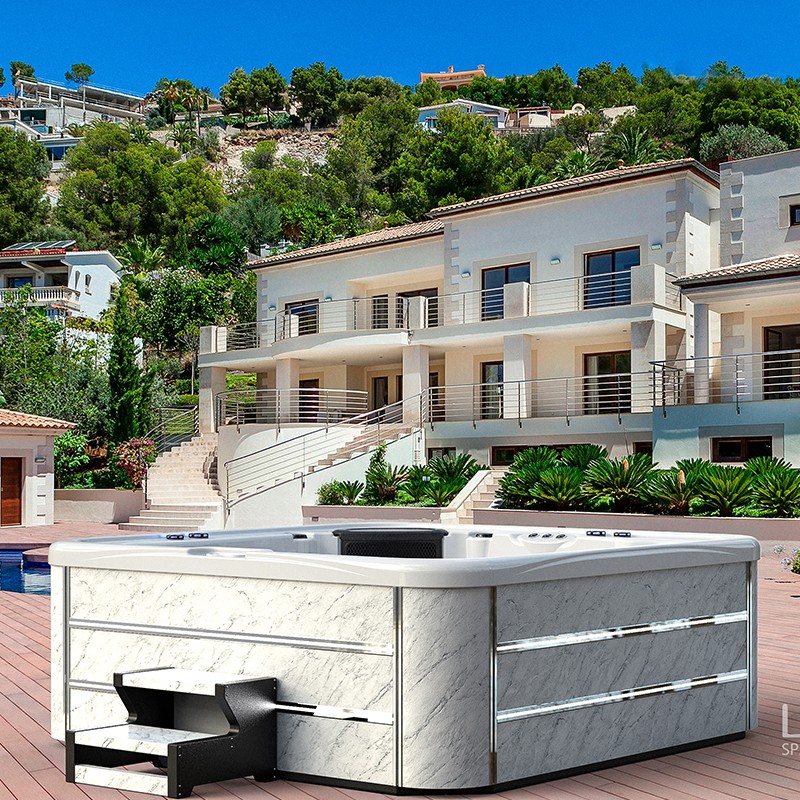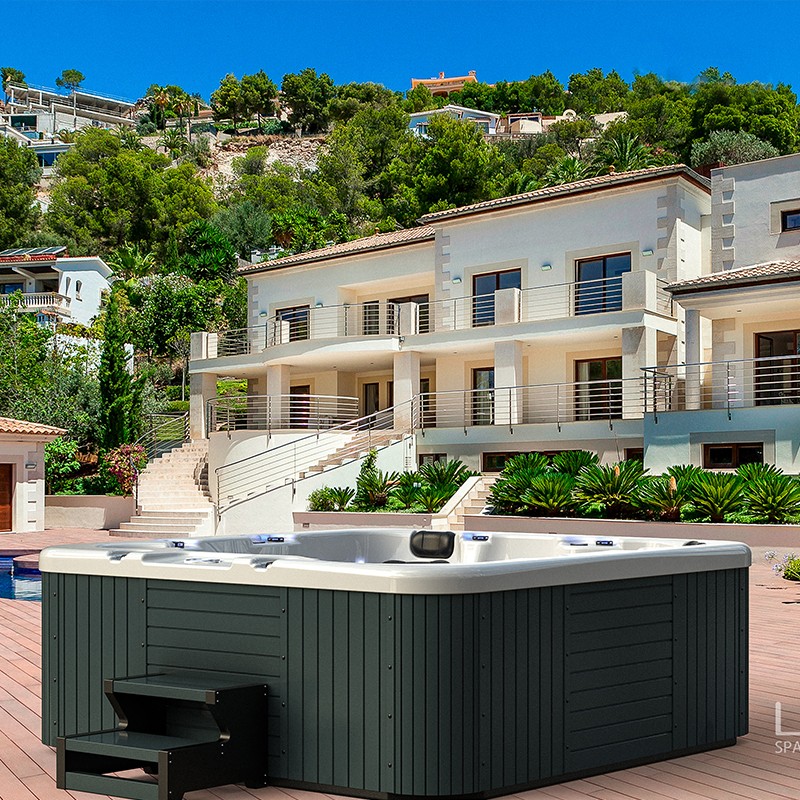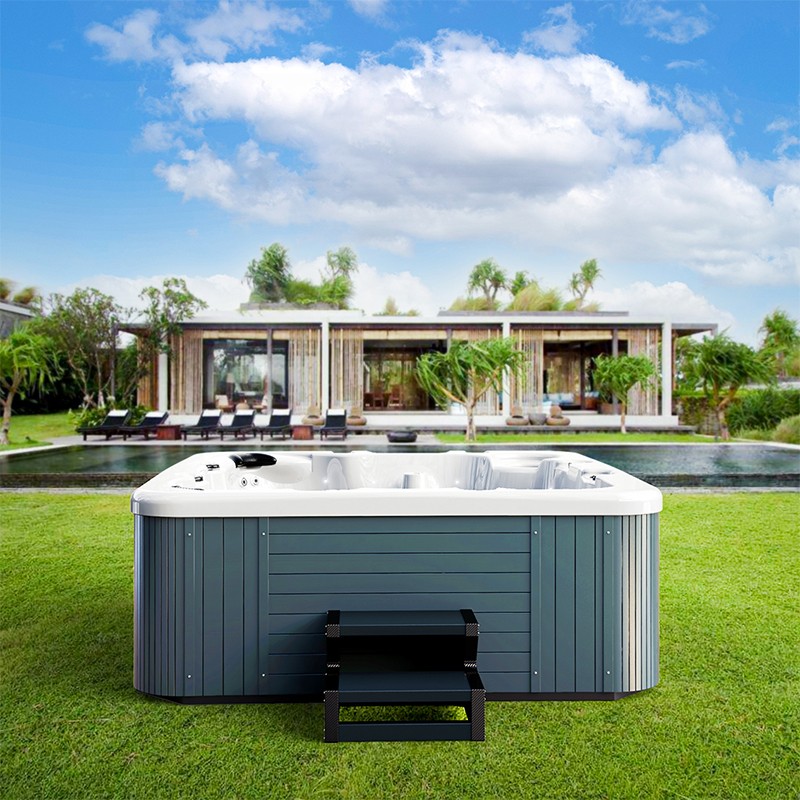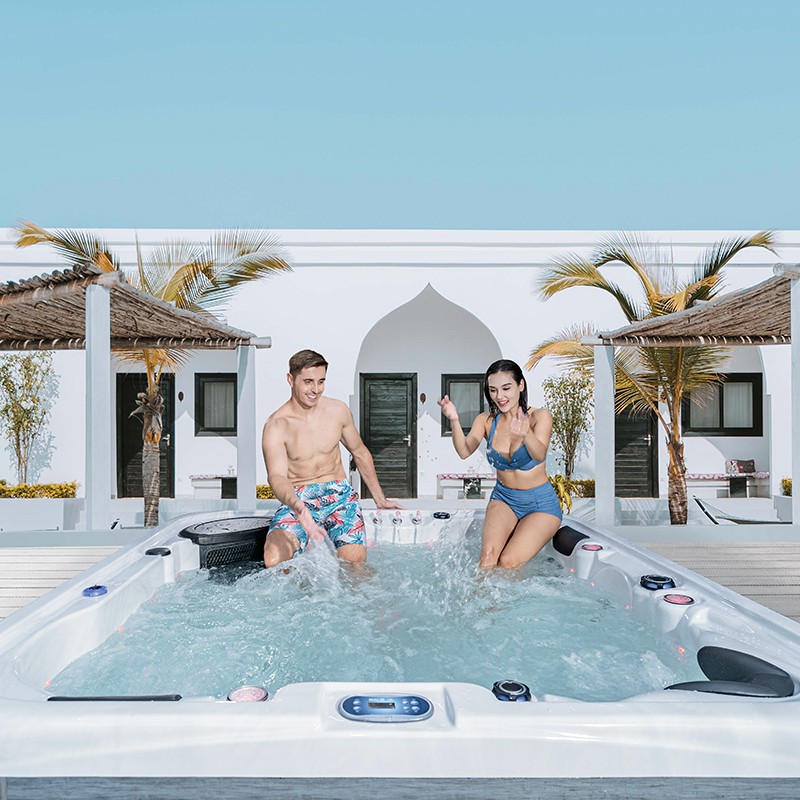
How much chlorine is needed for a 5-person spa hot tub?
2025-10-23 15:35Spa hot tubs, a common leisure facility in modern homes, hotels, fitness centers, and other settings, not only provide a relaxing and healing experience but also, with increasing frequency of use, place higher demands on water quality and safety. To ensure hygienic and healthy water quality during a spa experience, effective water disinfection is essential.
Chlorine, one of the most widely used disinfectants, controls its dosage scientifically, directly impacting the effectiveness and health of spa hot tub users.
This article will provide an in-depth analysis of the question, "How much chlorine is needed for a 5-person spa hot tub?" We will provide detailed answers to various questions, including water capacity calculation, chlorine types, dosage standards, factors affecting water quality, and practical operating procedures, to help users understand the correct use of chlorine in spa hot tubs.

The Significance of Chlorine Use in Spa Hot Tubs
1. Why is chlorine added to spa hot tubs?
When heated (typically 35°C to 40°C), the warm and humid environment of a spa hot tub is a breeding ground for microorganisms such as bacteria, fungi, and viruses. The presence of skin, sweat, cosmetics, and oil further degrades water quality.
Chlorine, as a strong oxidizing disinfectant, performs the following key functions:
· Kills bacteria and viruses in the water (such as E. coli, Staphylococcus aureus, and Legionella);
· Inhibits algae growth;
· Decomposes organic pollutants in the water;
· Prevents scale accumulation and odor formation in pipes and nozzles.
Therefore, the proper use of chlorine in spa hot tubs not only maintains water cleanliness but also extends the life of the equipment.
2. Special Characteristics of Spa Hot Tubs
Compared to ordinary swimming pools, spa hot tubs present the following challenges in disinfection management:
· Smaller capacity but higher user density;
· Higher water temperature, resulting in rapid chlorine evaporation;
· Sprinkler and pump circulation creates mist and bubbles, increasing chlorine loss;
· Filtration systems cannot fully replace chemical disinfection.
Therefore, chlorination requirements for spa hot tubs cannot be simply equated with swimming pool standards. Instead, they should be scientifically determined based on a variety of parameters, including tub size, water volume, number of people, and frequency of use.

Key Parameters for Determining Chlorine Dosage for a 5-Person Spa Hot Tub
1. Estimating Water Capacity
The capacity of 5-person spa hot tubs varies across brands and models, but generally ranges from 1000 to 1600 liters (approximately 264 to 423 gallons).
For ease of conversion, the following assumes a spa hot tub water volume of 1300 liters (approximately 343 gallons), which is a medium-to-high capacity and consistent with the configuration of most 5-person spas.
2. Target Chlorine Concentration
According to national public health standards (such as the US CDC, Health Canada, and the UK HSE) and spa equipment manufacturer recommendations:
· The Free Available Chlorine (FAC) concentration should be maintained between 3 and 5 ppm (mg/L);
· For high-frequency use or commercial applications, a setting of 4 to 6 ppm is recommended;
· A higher concentration (8 to 10 ppm) may be used for initial chlorination or "shock disinfection."
3. Chlorine Dosage Forms
Common chlorine preparations used in spas and hot tubs include the following:
Types of chlorine preparations | Ingredients | Chlorine Content | Features |
Trichloroisocyanuric acid (Trichlor) | Solid tablet | 90% | Slow dissolution, suitable for slow-release dosing |
| Dichloroisocyanuric acid (Dichlor) | Powder/granules | 56%-62% | Fast dissolution, suitable for rapid chlorination |
| Liquid chlorine (bleach) | Sodium hypochlorite solution | 10%-12% | Low cost, requires on-site disposal |
| Chlorine tablets | Usually stabilized chlorine tablets | 50%-70% | Easy to use, suitable for home bathtubs |
Using sodium dichloroisocyanurate (Dichlor) as an example (commonly used in home spas and hot tubs due to its high solubility and rapid reaction), we will calculate based on an available chlorine content of 62%.

How to calculate the amount of chlorine to be added to a 5-person spa and hot tub at a time?
1. Basic Formula
The chlorine requirement can be estimated using the following formula: Chlorine dosage (g) = [Target chlorine concentration (ppm) × Water volume (L)] ÷ Available chlorine percentage × 100.
2. Calculation Using a Real-World Example
· Water Volume: 1300 L
· Target Free Chlorine Concentration: 4 ppm (suitable for routine maintenance)
· Chlorine Agent Used: Dichlor (62% available chlorine content)
Substituting into the formula:
· Chlorine Dosage = [4 × 1300] ÷ 62 × 100 ≈ 83.9 g
· This means: A routine disinfection of a 5-person spa hot tub requires approximately 84 g of Dichlor granules.
· If trichloroisocyanuric acid (90% available chlorine) is used, then: Chlorine Dosage = [4 × 1300] ÷ 90 × 100 ≈ 57.8 g.
—The required amount is relatively less.
Other Factors Affecting Chlorine Usage
1. Number of Users and Frequency
· The more users, the more metabolites (sweat, urea, sebum, etc.) are produced.
· For each additional user, it is recommended to increase the chlorine concentration by 1-2 ppm.
· If multiple users are used repeatedly within a short period of time, a "shock chlorination" process should be performed.
2. The Effect of pH on Chlorine Effectiveness
· The ideal pH range is 7.2-7.6.
· At high pH levels (e.g., >8.0), chlorine's bactericidal effectiveness is significantly reduced.
· At low pH levels, chlorine may cause irritation to the skin and equipment.
Therefore, the pH should be checked and adjusted before and after each chlorination.
3. The Effect of Water Temperature on Chlorine Evaporation
· The higher the temperature, the faster the chlorine evaporates.
· At high temperatures (38°C-40°C), the chlorine refill cycle should be shortened.
· Avoid excessive chlorination at one time to prevent the formation of irritating chloramine gas.
4. Wind, Exposure, and Covered Conditions
· Outdoor spa hot tubs without proper covers can cause significant chlorine evaporation.
· Cover the tub after each use and replenish chlorine the following morning.
Chlorine Dosing Methods and Usage Guidelines
1. Manual Dosing
Applicable to home spa hot tubs:
· Test the current chlorine concentration in the water.
· Weigh chlorine granules as needed.
· Slowly sprinkle chlorine into the four corners of the tub while the pump is running.
· Run the circulation pump for 10-15 minutes to ensure even distribution.
· Test and confirm the concentration before entering the tub.
2. Automatic Chlorine Doser/Floating Chlorine Tablet Doser
· Can be installed with a simple chlorine tablet dosing device, suitable for long-term, sustained release.
· Regularly check to see if the chlorine tablets are fully dissolved.
· Not suitable for emergency or rapid disinfection.

Safety Precautions and Misconceptions
· Do not mix with other disinfectants (such as bromine);
· Do not allow chlorine granules to come into direct contact with the bathtub surface, as this may corrode acrylic;
· Avoid frequent over-chlorination to prevent the formation of harmful byproducts such as chloramines;
· Change the bathtub water regularly (recommended every 2-4 weeks);
· Use chlorine test strips or a digital tester to monitor water quality.
Scientific Chlorination for a Healthy Spa Hot Tub Environment
"How much chlorine is needed for a 5-person spa hot tub?" The answer is not fixed; it should be calculated based on multiple factors, including the tub's capacity, the type of chlorine agent, frequency of use, and water quality. In general:
· It is recommended that users add approximately 60-85 grams of dichlorodichlorobenzene granules (based on a 1,300 liter water volume) before daily use;
· If using trichlorodichlorobenzene or liquid chlorine, recalculate based on the available chlorine content;
· Maintain a free chlorine concentration of 3-5 ppm is ideal;
· Test and refill as needed after each use.
Can LOVIA SPA provide customized spa solutions?
Yes, LOVIA SPA specializes in providing fully customizable spa solutions for clients worldwide. Buyers can request specific spa sizes, jet configurations, shell colors, and special features. As a professional manufacturer and supplier, LOVIA SPA supports wholesale, bulk purchasing, and factory quotes at competitive prices.
Our team of experts works closely with customers to ensure every spa meets quality standards and personal requirements. All products are CE, ETL, SAA, ROHS, REACH, and ISO9001 certified.
